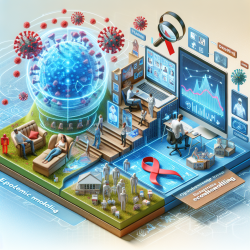Introduction
In the ever-evolving landscape of healthcare, the integration of technology and innovative methodologies is paramount. One such groundbreaking approach is the use of virtual worlds to model epidemics, as explored in the research titled "Halting HIV/AIDS with avatars and havatars: a virtual world approach to modelling epidemics." This study delves into the potential of using virtual avatars, or "havatars," to simulate human behavior in epidemic scenarios, offering a novel perspective on disease control and prevention.
The Concept of Havatars
Havatars are a unique pairing of humans and their virtual avatars, representing a digital extension of one's personality and behavior. This concept is pivotal in understanding how virtual interactions can mirror real-world behaviors. The research suggests that havatars in virtual environments, such as Second Life, exhibit behaviors akin to their human counterparts, providing a realistic approximation of human actions in epidemic contexts.
Applications in Epidemic Modelling
The potential applications of havatars in epidemic modelling are vast. By simulating virtual epidemics, researchers can observe how havatars respond to various scenarios, such as the spread of a virus. This method allows for the testing of different control strategies in a risk-free environment, providing valuable insights into human behavior and epidemic dynamics.
For practitioners, incorporating virtual world simulations into their research toolkit can enhance their understanding of epidemic patterns and inform data-driven decisions. By analyzing havatar interactions, practitioners can identify key behavioral trends and develop targeted interventions to mitigate the spread of diseases like HIV/AIDS.
Encouraging Further Research
While the current research offers promising insights, it also opens the door for further exploration. Practitioners are encouraged to delve deeper into the nuances of havatar behavior and its correlation with real-world actions. By expanding the scope of virtual world studies, researchers can uncover new strategies for epidemic control and contribute to the global effort in combating diseases.
Conclusion
The integration of virtual worlds into epidemic modelling represents a paradigm shift in how we approach disease prevention and control. By leveraging the power of havatars, practitioners can gain a deeper understanding of human behavior and develop innovative solutions to halt the spread of epidemics. As we continue to explore this digital frontier, the potential for improving public health outcomes is immense.
To read the original research paper, please follow this link: Halting HIV/AIDS with avatars and havatars: a virtual world approach to modelling epidemics.










